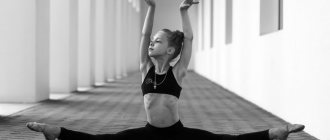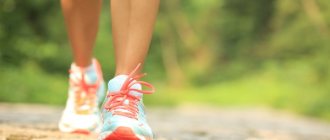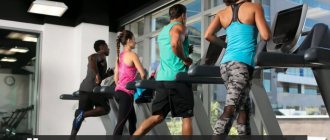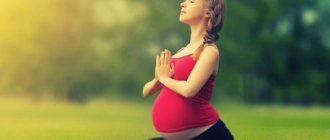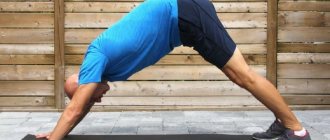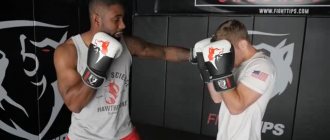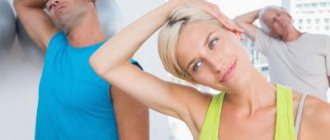By performing this set of exercises, you will stretch your muscles, relax your entire body, and increase flexibility. The stretching elements of yoga allow you to calm down and relax the body, especially after a dynamic and comprehensive training. They also charge you with positive emotions and help you recover faster. These exercises can be done in the morning, after you get out of bed, to wake up your muscles and provide yourself with a charge of positive energy for the whole day. Yoga for beginners and yoga for experienced practitioners provide different degrees of difficulty of asanas, depending on the level of physical fitness and how easily and how quickly the student masters the exercises.
Stretching exercises or stretching with yoga
The standard procedure and stretching of the leg muscles is done with the help of a bedside table, and if someone is really ambitious, then it is worth trying to do a stretch of the femoral biceps, leaning on the same bedside table and raising the leg.
And at some point, you begin to notice that it is becoming increasingly difficult to touch the ground with your fingers on straightened legs. Maybe that’s why it’s worth thinking about and trying to use much better methods - yoga? And just like Madonna and Sting benefit from it.
Stretching or exercises of this kind are recommended for those who remain in the same position for several hours, for those who work on a computer.
What is stretching?
Stretch like a cat. Lazy, slow. Take a few deep breaths in and out. Be aware of how you feel. Is this comparable to the feeling of having just been born?
Stretching exercises are done even unintentionally. Inert stretching in the morning in bed, stimulating the body to life. After working at the computer, get up to stretch your legs. Just a few movements will help the blood circulate faster, saturate the brain with oxygen and relax tense muscles. But stretching is more than that.
Benefits and Benefits
Classes with elements of yoga have many beneficial aspects that have a beneficial effect on human health and life. With the help of yogic practices, muscle tension and pain go away. Regular performance of a complex of asanas for muscle elasticity is expressed in several useful aspects:
- Posture is corrected;
- Reduces muscle pain after exercise (workout);
- Reduces the likelihood of injury;
- The elasticity of all fabrics is achieved.
Exercises to improve elasticity and flexibility trigger mechanisms that help relax and restore the body. If you stretch with asanas before bed, the quality of your sleep will gradually improve and your sleep will become deeper. A night's rest will be much more complete. Stretching asanas slow down the aging of the body and have a healing effect on it.
If you want to achieve a high level of health and well-being, you need to take care of your own body and regularly perform asanas aimed at strengthening muscles and making joints elastic. Only an active lifestyle and a flexible body will guarantee a healthy appearance, mood and a healthy body.
What is stretching
Stretching is a recreational activity that is relaxing and stretching, accompanied by relaxation music.
The classes use simple classical yoga asanas and elements of Pilates. The teacher offers three versions of each exercise, depending on the student’s condition: easy, medium and difficult. Contrary to appearances, stretching is not a lazy form of practice. Doing these exercises can make you very tired.
The main criteria for stretching in yoga
If we consider which yoga is suitable for stretching, then first of all you should pay attention to the directions where simple asanas are used. A mandatory requirement for performing exercises is to do them without tension. If you feel discomfort or resistance from the body, do not try to overcome them. This way you will only get injured. You should also not study on your own, especially at the initial stage.
Finally, remember to practice regularly. Spraining ligaments and returning muscles to tone occurs very slowly, so you will not see the first results from the efforts made immediately. The minimum period of regular classes is 2-3 months.
To ensure that attending classes does not become costly for you, our School uses a subscription system, with which the discount on one visit can reach 60%. And our teachers, thanks to many years of yoga practice, will do everything possible to ensure that the return from each yoga lesson is maximum.
- Kaula Yoga
- Hatha yoga
- Individual lessons with a teacher
Who is stretching for?
This activity is for everyone, regardless of age. Yoga stretching practice is especially recommended for those who are immobilized in one position for many hours: sitting at an accounting desk or working while standing. A side effect of this lifestyle is tight neck and back muscles. And those who train a lot in the gym need to stretch their body, because the muscles are very tense. It's best to start stretching immediately after strength training. The muscles will work better, become more flexible and less susceptible to injury. Strength training shortens and shrinks muscles, making them more visible. Stretching is the opposite: it expands. Therefore, people who want their muscles to be visible avoid stretching. But by stretching the muscles, shaping the figure and relaxing, you can clearly define the muscles.
Neck stretching exercise
This exercise is designed solely to stretch the neck muscles and relieve tension in the upper shoulders:
- First you need to sit on the floor and cross your legs. The back should be straight, the shoulders should be lowered and laid back.
- Next, you need to tilt your head to the right, aiming for your right shoulder. The shoulder should remain in its original position and should not rise. The neck muscles are stretched.
- If you want to increase the extension a little, you can put your right hand on your left ear, and, pressing lightly, pull your head towards your shoulder. This must be done very carefully and smoothly.
- Then repeat the same on the left side.
By performing these asanas and exercises regularly, you can develop the flexibility of your body and improve your overall health.
The main thing in the execution process is to remember to be careful, since it is very easy to overtighten something, resulting in negative consequences.
The best dumbbell press - advice from professionals and basic variations of the basic exercise (75 photos)How to do the plank exercise? Step-by-step description of the correct technique and features of the exercise
Facial exercises - types of the best procedures and techniques for performing the exercises necessary for a facelift (135 photos and videos)
What does muscle stretching do?
Stretching affects the entire body, it applies to all muscle groups, relaxes them and increases the mobility of the hip joints, knees, and ligaments.
Women quickly notice that they begin to lose weight. But this is not a weight loss effect - it is a stretching of the muscles that form the figure. Clothes are bought several sizes smaller, although the weight is almost identical, and sometimes a little more - because the muscles expand under the influence of training. But the body is in much better shape.
How to do stretching correctly?
The main thing is slow and gradual stretching through (!) mild discomfort and holding the position for 3 minutes. There are sources that say that 40 seconds is enough. It is after this period of time that the observant muscle spindle will transmit information to the nervous system that the body is not being torn, but is being stretched.
Bingo! The nervous system gives the muscle a “relaxation” reflex, and only at this moment will it begin to stretch healthily and safely.
So, bonus! I am sharing with you three asanas to develop flexibility.
Paschimottanasana
Paschimottanasana, translated from Sanskrit, means “back stretching pose,” because “paschima” is the back of the body, back, “uttana” is stretching, and “asana” is body position.
Sit on the floor. Place your feet together. Straighten your back. Pull your buttocks back with your hands so that they remain on the ischial tuberosities - this will align your body position vertically. We pull the toes of our feet towards ourselves, pushing the inner edges of our feet away from us. We tighten the kneecaps. From this position, we lean forward with our back straight along our legs.
We strive to first place the stomach on the hips; to do this, rotate the hip joint forward to tilt. Place your palms on the sides of your legs and slightly pull the mat towards you, this movement will help stretch your back. Try to lie down completely on your feet, reach out and grab the soles of your feet with your hands, try to place your elbows on the floor.
Contraindications: back injuries, hernia in the lumbar spine, inflammation of internal organs in the acute stage.
Benefits of asana
Paschimottanasana calms the nervous system, activates the parasympathetic system, and reduces high blood pressure. The hamstrings are stretched and the spine becomes more elastic. Digestion improves in this asana.
Parshvottanasana
Translated “parshva” means side; “uttana” - elongated; "asana" - pose.
From a standing position, place your feet the width of the mat. We turn (for example, take the right side) the right foot to the right, at an angle of 90% from ourselves, and we also turn the left foot to the right, but at an angle of 45%. We close the pelvis, that is, we turn the body towards the right foot. We fold our hands back behind our back into a lock. We lean forward towards the right leg with a straight back. Pull the lock from your hands upward, away from you, this will help increase the tilt.
Contraindications: injuries to the muscles of the back of the thigh, injuries to the lower back, inflammation of the sciatic nerve.
Benefits of asana
In Parshvottanasana, the muscles of the feet, legs and pelvis are stretched and strengthened. The shoulder girdle opens. The asana calms the mind, trains balance and endurance.
Adho Mukha Svanasana
Translated from Sanskrit, the asana means: “Downward-facing dog”
From child's pose (balasana), we slightly lift the pelvis up, and step forward with our palms to a finger-length distance. We place our hands shoulder-width apart. Push your hands off the mat and point your pelvis up and back. Try to find stretch in your back; you can bend your knees. We begin to build the “Downward Looking Dog” asana from the hands: we press the entire surface of the palms to the floor. We control the pressure of the palm at the base of the little finger and index finger. We direct our elbows towards ourselves, and bend our elbows outward in order to free up the neck. We check that the neck is not pinched by the shoulders. We direct the top of the head towards the palms. The shoulder blades are brought together, the chest tends downwards. We fold the lower third of the sternum towards ourselves. On the contrary, we direct the tailbone upward. When the traction in the back is lined up, you can move on to the legs. Try straightening them and placing your heels on the floor. Place your feet parallel to each other, hip-width apart, or point your toes toward the center of the mat, covering the sacrum with this maneuver.
Contraindications: Hand injuries, high cranial pressure.
Conscious Breathing
The great advantage of yoga is that it not only trains individual muscles, but also uses optimal breathing techniques. It’s not a fact that during your workouts you breathe correctly and do it at your best. Yoga teaches this way.
Stretching for beginners shows that after just a few workouts, you feel that muscle and nerve tension is reduced, the body becomes more flexible, the tendons are stretched and the step becomes lighter and weightless. The silhouette returns to optimal, which is reflected in the ergonomics of gait and running.
LiveInternetLiveInternet
For any person, it is important that the joints are mobile and healthy, and this is ensured by the elasticity of the muscles.
Even in ancient times, it was noticed that flexibility is one of the main components of a harmonious build and human health in general. Therefore, many exercises are devoted to developing flexibility and plasticity, which in modern fitness are united by the direction of “stretching”.
This direction has a philosophical basis, which states that a person who is able to control his body has great opportunities on the path to success. After all, energy circulates freely in his body, without forming negative clots that adversely affect not only health, but also other areas of life.
As a result of stretching, the flexibility of muscles and joints significantly improves, becoming mobile and flexible. After such classes you will move very beautifully and can successfully master any dance style.
Stretching (stretching) includes several varieties. It can be passive or dynamic, and can be carried out in contact with a partner. In any case, the results from regular stretching sessions are obvious. Your range of motion will increase so much that you will be able to control your body as you please. Even if it was previously difficult for you to imagine that you could do the splits, you will do it easily and confidently. The range of motor movements available to you will increase significantly, and you will be able to shine at any disco, surprising everyone with spectacular dance movements.
In addition to the aesthetic effect, stretching exercises provide excellent health benefits. Muscle tension goes away, joint pain disappears, the whole body becomes more relaxed and obedient.
Yoga stretching is also very useful for maintaining mental balance. She will teach her followers to restore emotional and mental strength, concentrate on sensations, and listen to their body. All this greatly contributes to emotional relief, which is so important in everyday life filled with various stresses.
In addition, yoga stretching is an effective method of weight regulation.
Yoga stretching. Warm-up
Yoga stretching. Beginner course
Fitness stretching exercises are available to everyone - there are no health restrictions. After all, all exercises are performed in a slow, smooth rhythm that does not put stress on the heart. Moreover, for many people, stretching is simply vital in the treatment of various diseases associated with poor posture and joint problems.
You will discover new unexpected possibilities in your body that will allow you to improve your life, taking it to a new, better level, filled with health and happiness. lady.qip.ru
See also:
Yoga complexes: Basic asanas
Yoga through life: first practice
Dance yoga
Positions for you
Tangled Wheel (Urdhva Dhanurasana)
- Sit on the floor. Bend your knees and move your hips away from your body.
- Place your soles together and move your feet toward your buttocks.
- Try to touch the floor with your knees.
- Relax your upper body completely.
The asana ensures blood flow to the abdominal cavity and pelvis and helps maintain a healthy bladder, prostate gland in men and ovaries in women. Relieves sciatica and prevents hernias and is one of the ways to stretch your legs.
Dog with head down (Adho Mukha Svanasana)
- Lie on your stomach. Place your hands close to your body, in line with your lower ribs.
- As you exhale, lift your torso and lean on your hands and knees.
- Lift your buttocks and arch your lower back.
- On your next exhalation, lift your knees and rest on your toes.
- Straighten your knees and lift your hips. By lifting and straightening your arms off the floor, lengthen your entire body.
The pose saturates the brain with oxygen, relieves nervous tension and slows down the heart rate. It is one of the ways to stretch the leg muscles and spine, thereby reducing back pain.
Goddess Pose with Twist
Parivrtta Utkata Konasana
It will not be that difficult for you to perform this asana. It will be especially useful if you feel discomfort in your back or hips.
- Stand in a wide stance facing the mat. Your feet should be a little less than a meter apart. Toes should point in different directions.
- As you exhale, bend your knees to get into a wide squat position. Place your hands on your knees.
- Inhale and keep your hips as low as possible. Pull the top of your head up to properly straighten your back.
- As you exhale, lower your right shoulder down and lift your left. When you do this, your torso will drop lower.
- Look over your left shoulder. Gently press your hands to your knees to properly stretch your spine.
- Hold the pose for a few breaths, then repeat in the other direction.
All asymmetrical poses in this yoga complex will need to be performed twice - in each direction.
The goal is elasticity
How to stretch your hamstrings?
- Sit on the floor with your legs straight and your palms flat on the ground behind your hips, with your elbows slightly bent.
- Bend one knee and bring your heel toward the inner thigh of your other leg. This is the starting position.
- Lean forward and grab the big toe of your straightened leg in a horizontal position. Feel the stretch in your hamstring.
- Hold the position, then return to the starting position and repeat on the other side.
Stretching with yoga elements will bring a million benefits and will change your life for the better if you practice asanas regularly.
Stretch correctly
To avoid mistakes in developing your own flexibility, yoga stretching for beginners is ideally carried out under the supervision of an experienced teacher-trainer. Below is a list of training recommendations to improve elasticity:
- Before performing a set of exercises, you should take care to warm up your joints;
- It is useful to improve elasticity and flexibility for all muscle groups at once - the human body is a complex mechanism that needs an integrated, competent approach;
- . Stretching, like warming up, is performed from top to bottom, starting from the neck and gradually moving to the lower joints of the legs;
- Pay special attention to training the muscles of the back and spine;
- Yoga practice should be performed slowly, without jerking. If in some position a person feels slight discomfort, there is no need to be afraid, unless it is severe pain.
Regular and systematic exercises will very soon give the first results: you will strengthen your whole body and achieve the desired flexibility. Classes aimed at developing flexibility with elements of yoga will certainly change your life for the better!
